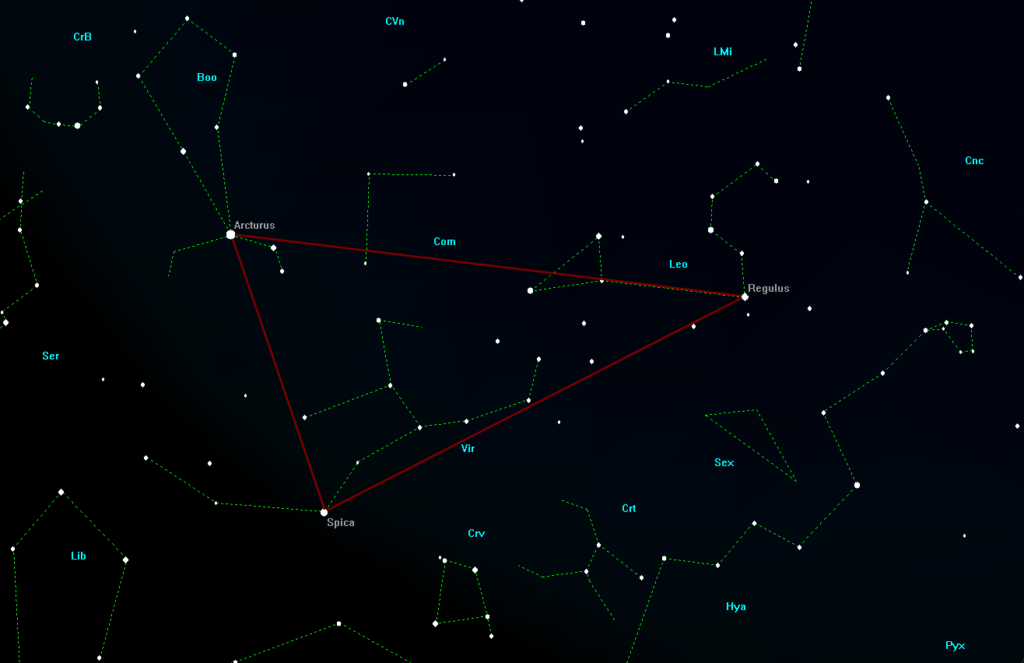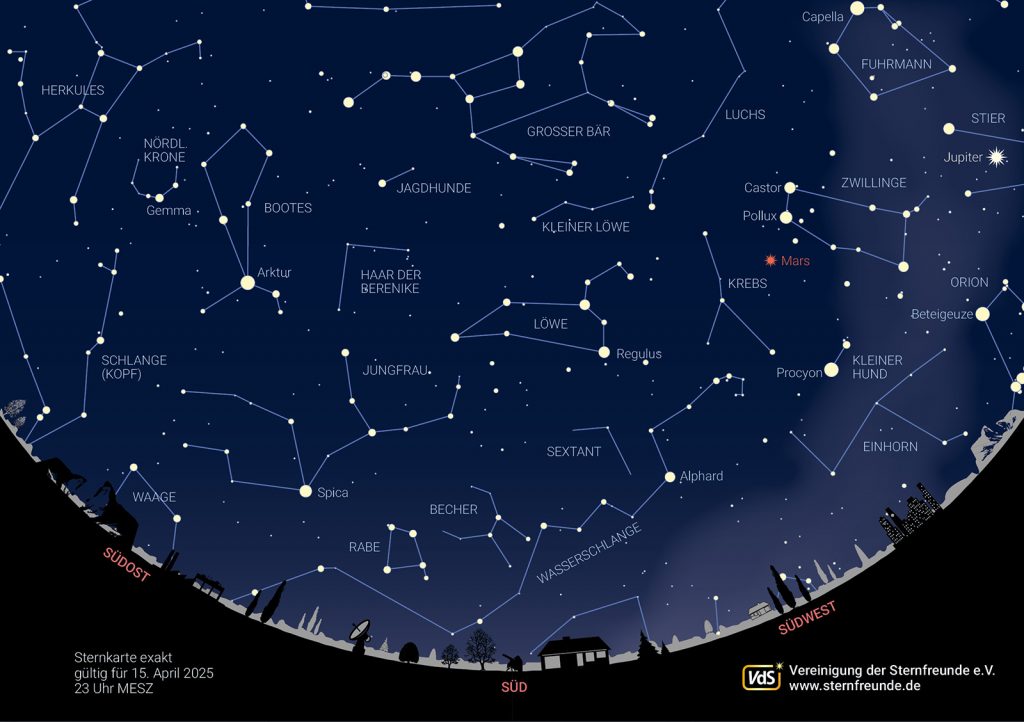The starry sky in April 2025
With the later onset of twilight, the opening of the observatory on Friday evenings in April is pushed back by one hour to 21:00 - provided the sky remains cloud-free.
SUN AND MOON
On the first of the month, the central star rises in Zweibrücken at 7:04 am and sets at 8:05 pm. The length of the day is 13 hours 1 minute and increases further to 14 hours 43 minutes at the end of the month. The full moon on 13.04. will affect the view of fainter objects.

From 10 p.m. on April 1, the waxing moon will appear to pass through the Pleiades above the western horizon. The Pleiades can be seen as a small collection of several stars or as a nebulous patch. Here is the view of the sky at around 22:30.
PLANETS
Almost all the planets have receded from the night sky.
Mercury almost reaches its maximum possible angular distance from the sun at 27.33 degrees on April 21. However, as it is 12 degrees south of the zodiac, it still remains too low for morning visibility.
Venus has begun its morning star period; in the telescope it can be seen as a thin crescent. On the 15th of the month, it crosses the horizon in Zweibrücken at 5:16 am.
The heyday of the Mars is over, it is no longer prominent in the evening sky. In the telescope it appears as a small disk.
Jupiter continues to dominate the evening sky. Its setting times are getting earlier and earlier, and its evening visibility is getting shorter and shorter as the days get longer and longer. On the 15th of the month it sets at 0:08 am, the end of civil twilight is not until 9:38 pm.
Saturn was recently in conjunction with (apparently near) the Sun. It cannot yet assert itself in the morning sky.
Uranus is no longer a worthwhile object of observation, Neptune stays in the daytime sky.
STARRY SKY
The spring constellations are now high in the sky. Only in the west are the remains of the winter constellations still visible. Above us you can see the spring triangle, which consists of the bright stars Arcturus in Ursa Major, Spica in Virgo and Regulus in Leo.
Deep in the South are the inconspicuous constellations of the Cup and the Raven and, to the south and west, the constellation of the Water Snake. In Greek mythology, Apollo, son of Zeus, once sent a raven with a cup to fetch water from a spring for an offering to his father. On the way, the raven was distracted by a fig tree whose fruit was not yet ripe. The black bird waited until the fruit was edible, ate it and only then completed his task. As an excuse for his delay, the raven bird grabbed a water snake and claimed that it had denied him access to the spring. Apollo saw through the lie and sent the raven, the cup and the water snake to heaven as a warning.
In the East another Greek hero, the summer constellation of Hercules, is already making his presence felt.
High on the northern night sky is home to the striking constellation of the Great Bear.
The following sky view is valid for April 1 at midnight, April 15 at 11 p.m. and April 30 at 10 p.m.



